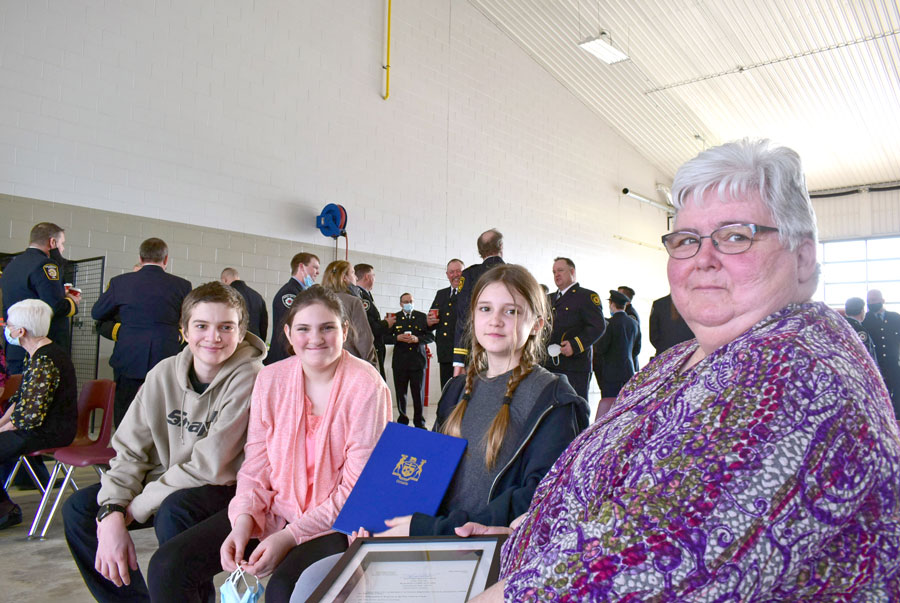LISTOWEL — As Randy Pettapiece’s run as Perth-Wellington’s MPP comes to an end, a decade-long goal is finally coming to fruition.
On March 17 Pettapiece announced two policy changes, based on the Rea and Walter Act, that aim to keep firefighters safe.
An amendment to Ontario’s Building Code will mandate that chief building officials across the province notify fire departments when buildings other than houses will be constructed or renovated using lightweight construction systems – a problem the community knows too well.
The announcement came on the 11th anniversary of the deadly St. Patrick’s Day blaze that took the lives of firefighters Ken Rea and Ray Walter. As Pettapiece said, it’s a dark day for not only Listowel – but a wider community.
“That fire 11 years ago stands as one of the darkest anniversaries in our community – and also in our province’s history. We all remember,” Pettapiece said.
“We remember the thick black smoke. We remember when we heard that something had gone badly wrong.”
No one remembers more than the families of Rea and Walter. They were at the announcement and expressed just how recent the fire seems.
“It seems like yesterday that it happened and yet it’s been 11 years now,” Louise Rea said.
“I’m relieved [the legislation] went through or that there’s going to be changes, because then the guys will have the information ahead of time and that won’t happen again – hopefully.”
Holly Walter shared a similar sentiment.
“We’re definitely grateful for all the work that everybody’s put into making this happen. And at least there’s something good that’s coming from this,” she said.
Janny Pape, Fire Chief of the North Perth Fire Department, said that this will be hugely impactful for current firefighters.
“It raises our awareness. When we arrive on the scene, we don’t always know where that building is constructed. If we know that information that helps us determine what type of attack to do. If it’s lightweight construction, there is a different level of risk.
“This will tell us in advance what that risk is.”
The legislation’s approval is only the first step. As Pape says, this will take a lot of time and a lot of work.
“For us at the fire service level, our community risk assessments have to be done by July 1, 2024,” Pape said. “Part of that process involves identifying these buildings. The other piece of it was the changes to the buildings. That’ll be for any buildings moving forward. It’ll require work on both the fire departments level and the building departments level.”
The legislation, as Pettapiece says, took 10 years to get off the ground. The difference now? How they got it through.
“There’s really no difference except one’s regulation. Before I tried to do a private member’s bill… When I first introduced it, I (sat) in opposition. The government of the day is the one who says what bills can come forward… that’s why it died,” Pettapiece said.
By going through as regulation instead of going through the house, committees and dodging red tape, the bill is posted for public input. If there are no objections, then it can be signed off and put into effect.
Pettapiece said it’s disappointing this couldn’t be done sooner, but they’re covering everything they wanted to.
“We’re covering the whole nine yards, on identification of these buildings. Going forward, if the national board agrees to do it, this is going to be something that’s going to go across Canada.”
If the legislation does go national, the feds will have to go through the same process that Pettapiece went through. His hope, if it does get that far, is that it can be as bipartisan as possible.
“This is all it is – helping these guys. That’s all it is. I hope they keep the politics out of it.”




